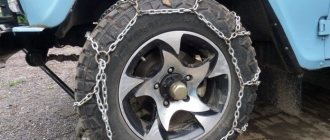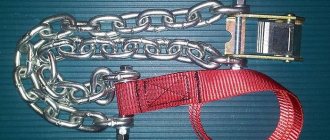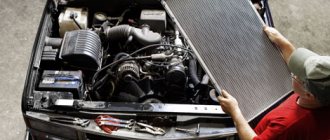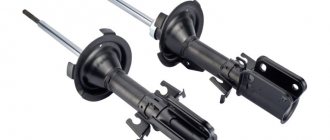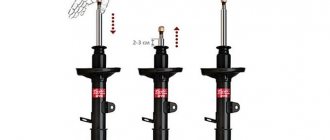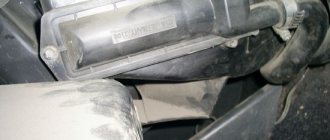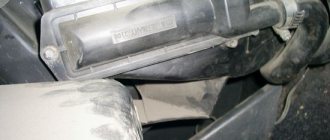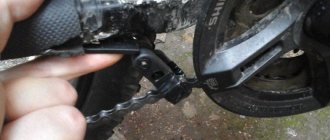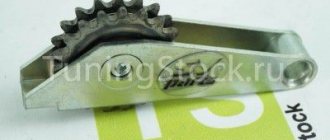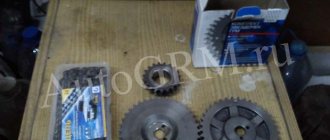Quite often, drivers encounter difficulties in winter. Snowdrifts and ice pose a great danger. A winter set of tires may not always help here.
Even all-wheel drive vehicles designed for off-road driving may not be able to overcome snowy roads.
For such situations, there is a corresponding modernization of the car - these are snow chains.
In those places where the car will be buried in the snow or skidding due to ice, this device will increase the chances of the vehicle passing.
This article will talk about how to make snow chains with your own hands.
Purpose
This wheel improvement is designed to improve the vehicle's maneuverability in snow-covered areas or particularly slippery sections of the road.
For example, a car enthusiast is driving along the highway. So far he hasn't had any problems getting around. His car doesn't skid. But after a while he will need to turn onto a country road. As practice shows, such sections of the route are not always properly cleared of snow.
In order to eliminate all such situations associated with the car getting stuck in the snow, you should use snow chains. They will increase traction and help the driver a lot.
After driving through the problematic section of the road, they can be removed and placed in the trunk. It does not take a lot of time.
Classification
The main difference is the diameter of the wheel on which snow chains will be equipped. In other words, they divide into the following categories: for trucks, for cars and SUVs.
Consequently, for a larger wheel, a chain with large links is selected. The load is many times greater, in connection with this there are such criteria.
Moreover, the do-it-yourself manufacturing process for all types of vehicles, both for trucks and passenger cars, including the VAZ brand, is no different.
What are the dangers of using snow chains?
The following negative consequences are possible with constant use of snow chains:
- The load on the steering device increases.
- The suspension wears out quickly.
- The chains make a lot of noise when driving.
- Tire wear increases.
- Unable to maintain high speed.
- It's not comfortable to move around.
Do not use these hard type devices when driving on asphalt roads - this will damage the road surface. Observe the speed limit: for hard ones - no higher than 80 km/h, for soft ones - no more than 50 km/h. Use such equipment only in emergency situations to increase cross-country ability. Homemade hooks (mordovkas, anti-skid belts, anti-slip tapes) are suitable for any car - Gazelle, truck, tractor, UAZ, VAZ, Niva and others.
Ways to increase vehicle cross-country ability
To improve the vehicle's maneuverability on muddy or snowy road surfaces, drivers use various methods to improve the traction of tires on a sticky road.
There are two ways to improve a car's cross-country ability:
- Buy and supply tires with deep treads with a certain pattern, for example, herringbone.
- Buy or make your own bracelets or snow chains.
Tires with appropriate patterns and deep treads create a lot of resistance while driving, which increases fuel consumption. In addition, all-terrain tires are heavy and noisy.
A FullFree device has appeared, which, according to manufacturers and sellers, reduces fuel consumption and protects internal combustion engine parts from low-quality fuel. Let's find out whether fuelfree experts are telling you whether it's a scam or true.
Using the second option, to put on the chains, you need to use a jack or by unfolding the chain and driving over it, followed by fixing it.
Design and types of anti-skid means
These devices are based on a simple design consisting of steel links or reinforced wire. A successful application is to distribute the elements evenly over the entire radius of the tire. Failure to comply with this condition may result in rupture of the product and loss of anti-slip properties. The classic scheme, tested by more than one generation of motorists, consists of internal and external components that run along the entire circumference of the tire. They are connected to each other by transverse parts, the so-called “lugs”. The technology for making a chain for wheels with your own hands is accessible even to beginners. Depending on the arrangement of structural elements, there are three types of devices:
- in the shape of a ladder;
- in the form of a honeycomb;
- in the shape of rhombuses.
Each type has its own advantages and disadvantages. In terms of labor costs, the first option is the most accessible - “ladder”.
Dimensions and pattern
You can also divide these designs by size and pattern.
The size is selected solely according to the parameters of the car itself, namely, what ground clearance, wheel width, etc.Basically, the instructions write for which cars this or that chain is designed. Otherwise, you can measure everything yourself. This is very necessary in order to protect yourself from the possible snagging of this very chain on parts of the car’s chassis.
There are 3 classifications of drawing:
- Ladder
- Triangles
- Honeycomb
"Ladder" is the most affordable option. This chain fully corresponds to its name, because the weaving occurs in stripes along the tread, perpendicular to the wheel.
This design is suitable for muddy areas, but due to the small contact with the road there is a risk of self-burrowing. Therefore, in deep snow, this type is not effective.
"Triangles". Great in deep snow, but not effective in muddy areas. If you look at the width of the tread, you can see a zigzag shape.
Honeycombs are intersecting diagonal lines. This option has 100% contact with the ground, which ensures excellent lateral stability. But the design limits the speed of movement.Main stages of work
First you need to cut four pieces of chain to the appropriate length. To do this, measure the required size and cut it with a grinder.
And after that, you will need to thread straps with a lock into the prepared sections of the metal chain (in the first and last link). Four pieces of chain will require eight straps.
And in the end we get ready-made “elements” - now you just need to install them on the wheels. No one should have any problems with this.
Such “shoes” are unlikely to be suitable for a long drive, but if you need to go out for a short time, then homemade chains will do just fine. Moreover, the cost of materials is cheap. For details on how to make snow chains on car wheels in 15 minutes, watch the video on the website.
How to make chains yourself
It is worth noting that you can make snow chains yourself. Here you will need the chain itself. Examine it carefully. There should be no cracks in the links.
Welding should not be present, this can cause the links to break. You will also need an angle grinder and a set of carabiners with a tensioner.
Before you start the work itself, decide on the drawing. The simplest is the ladder. It is recommended to start with it.
Then we measure the length of the chain. It should be enough to wrap around the wheel. We cut off the excess length with a grinder.
We attach carabiners along the edges. They are needed to secure the edges. We equip one of the edges with a tensioner. It will securely fix the device on the wheel.
Doesn't it all sound so complicated? That’s right, it will take a little perseverance and the right tools. The assembly process takes a couple of hours.
If you have any questions about this point, it’s better to watch a video about making snow chains with your own hands. They will tell you what other forms there are and how to make them. And it will be easier to navigate, seeing how the manufacturing process occurs.
Testing new chains
To ensure the effectiveness and reliability of previously installed snow chains, they must be tested. To do this, just wait for bad weather and, having discovered a difficult section of the road with no traffic, drive along it. It is advisable to test chains on different types of areas (swamp, ice and snow slides). This is the only way to evaluate the effectiveness of the circuits.
Checking the snow chains
Note! During use, individual chain links may fail, so the structure must be inspected periodically.
If the check has shown that the chains are effective and installed correctly on the wheels, then you can safely use them in bad weather. In winter, the product should become an integral element of the decor of your trunk. Neither a nail nor a rod, dear motorists!
Making a simple homemade chain for car wheels
It is not always possible to purchase an anti-skid device - the high price and lack of availability of the required size forces car owners to solve such issues on their own. I must say that this is a pretty good choice - all the necessary components are always available in hardware stores. In a critical situation, you can simply try to wrap the tire with a cable or a piece of metal rigging, but not everyone carries such a kit with them. Moreover, for a disc brake system this option is absolutely contraindicated - such a design will disrupt the operation of the mechanisms. Therefore, it is worth preparing homemade wheel chains in advance, for which you will need:
- steel chain with a cross-section of at least 5 mm;
- hooks;
- carabiners with a screw-on coupling;
- tension device;
- bolts, nuts and washers.
The dimensions of the blanks depend on the dimensions of the tire used, so it is important to first measure the required indicators. The number of transverse parts is also individual - craftsmen recommend making sure that there are two “cross members” at once in the plane of contact of the tire with the ground. Thanks to this scheme, the traction characteristics and reliability of the entire product will increase. The process of preparatory actions and assembling chains on wheels with your own hands consists of the following points:
- cutting longitudinal blanks;
- cutting of transverse parts;
- securing the transverse element to the 6th link of the longitudinal chain;
- installation of subsequent “crossbars” every 9 links using rings or hooks;
- In the middle of one longitudinal workpiece, fasten a segment consisting of 6 links and a tensioning device with a hook.
As can be seen from the description, if you have certain skills and tools, the operation will take no more than 40 minutes. Those with experience in welding can put it into practice and abandon threaded connections, which will certainly affect the quality of the equipment.
After checking the reliability of the finished product, all that remains is to install it on the car.
Good afternoon friends!
It turns out that winter is just around the corner, New Year, Christmas, a time of miracles, new achievements and optimistic plans for the future. Mototoxicosis can melt the ice of Antarctica and Desperado, my two-wheeler is freezing in the garage at -28. It turns out that I finally got a Suzuki Djebel 250 motorcycle from 2003. Well, literally a week ago I got it, and I’ve already started messing with it. This is enduro, oh my! This means you can drive in winter!
THERE Arose the question of improving the quality of wheel grip with snow/ice/frozen ground. I don't have a second set of tires at my disposal to do studding. I don't want to buy them and wait. I want to ride! Therefore, as an alternative to spikes, I chose MORDOVKA . In vain, as it turned out.
In this post, I will traditionally tell you in a drug-like way what I got out of all this, describe my impressions of winter trips and the Suzuki Djebel 250 motorcycle itself. So, grab some tea, a bun and let’s plunge into the world of winter endurism together. You won't get bored, I hope. There are a lot of all sorts of photographs there. If I had more time, I would have written less, but so what.
So, I apologize in advance for the chaotic style of presentation. Secondly, I actively accept congratulations on the purchase of a new motorcycle
Well, off we go! The idea of having an enduro bike came to me a couple of years ago, when I went to visit my brother in the village. It turned out that I literally got myself into brown adventures. It was 8 km of hell, horror and sweat through the autumn mud on a cruiser, with stupidity in the head and adrenaline in the blood. In case anyone is interested, you can read it here.
Then I thought that I would drive this part of the road laughing in an endurike. That time I was sweating a lot, and at the last moment I even got a little desperate, I thought I wouldn’t go back. Then my brother reminded me of MORDOVKA . I made them from some kind of plastic rope that is used to tie wheels with hay. It turned out great. I got out of this shithole without falling once.
So, what is our introduction? We have a terrible frost on the street, -28, it’s impossible to beat a tooth, we have a couple of evenings of free time, a new motorcycle, a dozen meters of some kind of chain from a construction market. Oh yes, we also need a pinch of crazy enthusiasm and an iron cable. I have them!
What I don’t have is a second set of studded tires, the patience to wait for them to arrive, if I do buy them, well, I’m a decent beggar. I also wonder why there is so little information on the use of muzzles on motorcycles? There is a lot of information about studding, but nothing about chains. Now it’s clear why, but let’s go in order.
Well, since I mentioned spikes, let’s put together the main types of wheel squeezing:
1) Mounted with M3 or M4 bolts, with washers and a tie with one or two nuts. Cheap, cheerful, very labor-intensive, the material of the bolts is soft and quickly wears off on asphalt and frozen ground.
2) Secure the wheels with self-tapping screws and glue. The screws are screwed into the checkers and only the cap sticks out. Even cheaper, less labor-intensive, much worse than “holders”; if the self-tapping screw falls out, then you can’t screw a new one into the same hole, there is a risk of puncturing the camera from the inside with the tip of the self-tapping screw.
3) Similar, but the self-tapping screws are screwed in from the inside of the tire with the point outward. Optionally, you can screw nuts and washers on top for better fixation. A little more expensive, better grip, better self-tapping material.
4) And finally, an option for real men. Bristle the wheel with dowels. And if you also grab the washer with welding, it will be absolutely delicious. The most expensive, the best grip with Mother Earth, the best stud material, it doesn’t wear off, but it’s the most difficult to make.
But let's return to our scolopendras. It turns out that I went to a hardware store, and a woman immediately jumped up to help me and began to court me in every possible way. I tried to find out why the hell I needed a chain, what load capacity, short-link or long-link, galvanized or hardened. But when I said that I needed a chain for a motorcycle, he somehow immediately dropped his head and was silent for about 15 seconds. “These are for wheels to ride in winter,” I clarified. This interested him and in the end we chose a short-link galvanized chain with a thickness of 5 mm. Wishing me luck, he gave me a parting slap on the shoulder.
Oh yes! Before this whole thing, I was thinking about the “tread pattern” woven from the chain. From the height of my ignorance, I reasoned like this: what is the function of the rear wheel? Push the motorcycle forward. Which plane requires maximum grip? Longitudinal. Those. The rear wheel will work most efficiently if transverse plates are attached to it, like a ship with a paddle wheel drive. What about the chain? Those. we need to make transverse coils of chain around the tire. But this approach is only good in the longitudinal plane. Those. the motorcycle will move forward well, it will row its wheel like a mad boar, but in the transverse plane it will be unstable. It will drag the rear of the motorcycle left and right, roughly speaking. In fact, this is what happened.
What about the front wheel? And the same thing, only its function is to set the direction for the motorcycle to move. How can I get him to do this? Here the front wheel must be stable against lateral movement on the ground. What shape of tread needs to be made so that I don’t fall into brown slush after just a meter of driving? Longitudinal furrows and grooves are needed. This means that the chain on the wheel needs to be laid in such a way that my steering wheel does not break when crossing a snow track. Here I also had the idea of screwing bolts into the chain links so that they formed spikes.
Of course, all this demagoguery is true for soft surfaces such as snow/sand/dirt/semolina. But I went astray in my reasoning. Now I already understand this. The trouble is that compacted snow is almost equal to ice, especially after a thaw. And the chain links are relatively smooth and do not stick into the surface.
Here, armed with writing instruments and parchment, I drew the following designs of protectors:
Well, in general, I tried to figure out by eye how I would weave this whole thing from a chain and became sad. I am quite a hands-on person, so I immediately discarded complex designs. And I want to drive faster! I settled on simple options: for the front wheel, the second chain diagram on the left, and for the rear, transverse chain rings with a pitch of 11 cm, according to the second chain diagram from the right. Why did I get excited about making rings in 11 cm increments? But because there are some unknown grooves in the tire tread, where the links fit well and do not stick out, without touching either the pendulum or the drive chain. In total, 18 rings with a length of 21 cm are required for the rear wheel. This means we need 21*18=3.78 meters of chain.
We also need a cable as strong as an elven bowstring. I took a ruler and measured the distance from the center of the wheel to where the cross ring of the chain would end. It turned out to be 29 cm. Let's calculate the length of the cable: L=2*pi*R = 2*3.14*28=1.76 meters of cable. But the cable must be on both sides of the wheel, which means its length doubles.
Let's start fiddling with the chain. We count 10 links and cut the sausages. In total you need 18 pieces. My calculations failed me and one sausage was missing. I had to make it out of sawn links.
When we are done with the chain, we begin to work with the elven bowstring. It is necessary to make two loops at the ends of the cable in order to insert them into the bolt to tension the entire structure. For this purpose, rope clamps are sold in hardware stores. It costs 4 piastres, it looks like this: Oh, here’s another thing. I use a cable with a diameter of 3 mm and a cost of 11 tenge per meter. Well, so, we make two cable blanks for both sides of the wheel, put on chain sausages and fasten them with tape to the tire so that they don’t fall out. Then I glued the cable along the contour of the wheel in the same way to accurately determine the required length. I know my calculations...
I tried to bite the cable with pliers, like Jackie Chan in the movie Police Story 2. I almost broke all the bones in my hand.
Ah-ah-ah! I also brought a motorcycle home! Well, I couldn't resist. But today I slept just great. At night I woke up, a girl was snoring next to me, and opposite, near the wall in the twilight, the menacing but unclear silhouette of Jebel loomed. I smiled like a fool into the night.
But, nevertheless, I had to pull the motorcycle back into the garage, otherwise I risked crushing the floor of the house with chains. I would have gotten it in the forehead. He pulled it out, which means he started to pull the muzzle and an unpleasant incident emerged. It turns out that the long tension bolt bends sideways due to the fact that the cable loop is bent at an angle and the bolt begins to bristle. Then, I replaced the bolts with these things:
But I really wanted to test it, so I tied this bolt to the cable with wire so that it wouldn’t stick out, and I skipped off to test it.
Out into the street... HOLY VISSARION! +1 degree Celsius. Recently it was 29. The snow was compacted and slippery. Okay, I started it and drove off. Well, what can I say? It goes great in a straight line. I didn't throttle very hard. Firstly, it was my first time riding an enduro bike. Secondly, it was my first time driving in the snow. Thirdly, there are no chains on the front wheel. Somehow I managed to turn around, because the front end slides furiously and getting out, even from a small snow rut, is a big problem. Of course, the front brake didn’t work at all, but the rear brake worked great.
In short, I fell. So much so that the steering wheel was bent. Here I was amazed at the stock of curse words and even learned a few new ones. Well, this is necessary! Ruin a new motorcycle. In the first week. Out of season. In winter. About the snow. Fucking Bartholomew...
Then I remembered a similar incident two years ago. The new Desperado has just arrived. It stands, shines, sparkles. I run around, drool and blow dust off him. And so that the beauty of Despera becomes absolute, I decided to erase the auction number written on the plastic windbreaker. I took a rag, acetone and... DISSOLVED THE PLASTIC TO THE HELL! It went from transparent to a cloudy spot. I got scared, began to rub even harder, and it began to corrode even more actively. So I swore then... Remember the movie with Mr. Bean? Where he accidentally sneezed on a painting in a museum, then tried to wipe the sniffles with a rag, and the pen leaked into the rag, so the painting turned blue, then Bean started rubbing it with some kind of product and as a result, he got the same thing as me.
Okay, we’ll take into account the shortcomings, we’ll redo the cable tensioning system, the front chains will be better. By the way, about the front chains. It turned out like this:
It worked out, but it didn’t work out. The transverse links, those that climb to the rim, tend to touch the rubber boot of the shock absorber. What a reptile! And I tried so hard to saw the chain and then connect it back.
Well, okay, I put the chain on the wheel, aligned it, tightened the nuts on the bolts and began to tension the chain with the longitudinal tension bolts. It turned out well, it doesn’t touch anything and looks to be holding tightly. Even more. But still somehow boring. What if the chain slips off the wheel due to transverse forces? We'll have to fence the guy wires. So I bit off 38cm pieces of cable, threaded them into links and tied them under the rim with a rope clamp. And you need as many as 18 of these things. Next, I threaded another piece of rope through them, which will pull them together. I agree, this design is worse than having a cable on both sides of the wheel. But the chain stays on the wheel perfectly, so we’ll see. I think it won't fall apart while moving.
I went out for the second time. ABOUT! It got much, much better. Now it’s not scary to take turns at all. Well, without fanaticism if so. It goes well in loose snow, but the backside wanders a little. Longitudinal snow tracks still need to be driven more carefully, especially icy ones. Not bad overall. It’s better on asphalt, of course, but probably better on spikes too. Well, what's done is done.
There are no photos of the ride, sorry. I ride mostly after work and it’s already dark, and it’s a little scary to take a camera with me. I'll fall and break it.
Now, let me go over the motorcycle a little. This requires a separate detailed post, but I’ve already made a graphomaniac here, but oh well. My first impression of Jebel when I unpacked it was: “Damn, why is it so big?”
I thought the endurik would be small, but no! Huge, you bastard! I sat down and my hands immediately fell comfortably on the steering wheel. I was immediately pleased that the handles were rubber and not iron, like Desperado’s. They will not scroll in your hands. The saddle is a bit hard, but I can deal with that. Or I’ll sew something soft or make my butt softer. But he stood firmly on the ground with both feet. The motorcycle has a lot of spring. He pushed the girl onto the saddle behind him. I have it compact, he says it’s convenient. I hope he won’t complain, and if he does, he’ll get it from me! It's time to start! Well, I started it for the first time in my room. Well, I really wanted to. Literally started up like crazy. I was even surprised. Still, maybe the battery is dead, or maybe I didn’t charge it well, but it’s good to start it by simultaneously pressing the engine start button and pulling the kick. And when I was riding, I was pleased with the unexpectedly bassy and brutal sound, if I accelerated properly. You immediately feel the lack of torque at idle and slightly higher speeds. If you can drive the Desperado freely from idle, then no, no. Also, neutral is caught worse. Maybe because the oil is bad? I was very pleased with the headlight. Shines like a star.
About endurism in winter. Yes, this is awesome! No, really. Make spikes/chains and you don’t have to close the season at all! Not at all as cold as I feared. And if you drive a little faster than a pedestrian, it gets hot. Well, I myself live in a very provincial area, which I am incredibly happy about, and I don’t have much asphalt here. So this is awesome too! Such a haven for rides. And there’s also a wide river nearby. Although, I didn’t dare visit her. The ice is thick, actually, but the chains don’t hold on to it well. In short, there is somewhere to ride. It’s true that people look at me like I’m crazy, but my eyes are hidden behind my helmet, so I don’t care. We have an excellent ski track in the forest here. Wide, with snow trampled by skiers, with many branches in the forest, with hills and hills. I really want to go there and drive. But I’m afraid that especially skiers will catch up with me and stick a stick in... for damaging their ski track. But, damn it, it's a hunt!
So, let's summarize. Pros and cons of muzzles: + easy to make + the tire does not deteriorate i.e. you can use one set for winter and summer + good grip on soft ground + looks cool
— poor grip on ice/well-packed snow - wheel unbalancing (although not relevant at low speeds) - risk of the chain falling off when driving - considerable weight (for the rear wheel the weight is 1.7 kg, for the front wheel - 2.5 kg)
That's all, I guess. The main conclusion is - don’t listen to me and make spikes from dowels like normal white people.
Be healthy, friends.
We study the process: how to make snow chains for cars with your own hands and video of working moments
Experienced motorists assure that at critical moments a cable or even simple rigging comes to the rescue. You can simply wrap them around a wheel, another question is that such things are not always at hand. Moreover, this method is strictly contraindicated for cars equipped with a disc brake system. Therefore, it is better to be patient in advance and make a “chain body kit” yourself.
When making snow chains with your own hands using available videos, where the footage of the blanks is not always indicated, it is important to make accurate measurements of the radius and width of the tire. Based on the results obtained, calculate the parameters of the future product. The number of transverse elements (lugs) is also selected individually for each car model. Experts recommend focusing on the fact that there should be two transverse parts at once in the plane of the contact patch of the coated rubber.
The procedure for assembling a device to increase cross-country ability consists of performing the following points:
- cut longitudinal and transverse chain blanks with a grinder;
- secure the first transverse element to the 6th link of the longitudinal part using bolts and washers, hooks or welding;
- mount all subsequent crossbars every 8-9 links;
- in the center of one longitudinal element, install a segment consisting of 6-8 links and a tension device to securely fix the product;
- Install carabiners with a diameter of at least 5 mm at the ends of the longitudinal sections.
If you have certain skills and tools, the operation will take about 40-60 minutes. It will be useful to have experience in welding work, which will allow you to avoid threaded connections in practice, which will have a positive effect on the quality of the device.
Manufacturing technology
First, the chain is divided into equal parts in accordance with the number of bracelets that are planned for installation. To do this you just need to take into account the thickness of the wheel. For example, for 215 tires, two pieces of chain of 15-17 links each will be enough. everything is calculated empirically, the main thing is that the chain segments are the same.
When the chain is divided into segments, the bracelets are connected in two pieces of chain using a bolt with a diameter corresponding to the size of the link and a length of 50 mm. To ensure that the ends of the chain are fixed and do not move while moving along the bolt, either a bushing of the appropriate length is put on it, or nuts are screwed on so that the end of the second section of the chain is firmly attached.
It is better to use a self-locking nut or flare the thread to prevent spontaneous unscrewing. When the bracelets are ready, their ends go around the wheel and are connected with rigging straps.
After installing the device on the car, it is recommended to drive a couple of hundred meters and check the strength and reliability of the structure. Naturally, with bracelets, the maximum speed will be limited at the discretion of the driver, but it is not recommended to exceed the barrier of 50-60 km/h on a flat road, and to stick to 20 km/h on off-road roads.
So a simple device can make any road passable and any point accessible all year round. Do not exceed the speed limit with bracelets, and have an easy road for everyone!
Project of an anti-skid device for a car
We were inspired by last year's research to get creative. Then we chose what was better to buy: chains or anti-slip bracelets. The verdict was that there is nothing to do with anti-slip belts on serious off-road conditions. In addition, the cuffs damage alloy wheels, which is critical for many owners. But the real help in making something with your own hands was the price list for the Konig chain. Last year they demanded about 9,000 rubles for the ZIP Ultra model. For a moment, for the same money a ready-made set of winter tires with above-average quality for the now popular 15-inch is sold. Agree, this is impressive.
Choosing a chain weaving pattern
Before purchasing and making anything, you need to have a project in hand: this principle underlies any serious invention and the tire chain is no exception. When designing wheel attachments that increase your vehicle's ability to maneuver in snow, it is important to choose a weaving pattern that suits your needs.
| Ladder | Honeycomb | Rhombus |
| +The most powerful traction force + Low price + Simplicity of design | +Excellently storms the rut +Smooth running on hard ground +Best handling in class +Good lateral grip | +Excellently gets out of ruts +Good handling |
| - Doesn't get out of a rut —Worst lateral grip in class —Increased load on transmission units on hard surfaces | —Average traction level | —Rows mediocrely —Does not prevent the machine from sliding sideways —High vibration load of the transmission |
| Suitable for driven axle | The best choice for mountain roads and light off-roading | Not recommended for use. Pay attention to the honeycomb or ladder |
Link size
Not just a drawing. The caliber of chain links also determines a number of important characteristics, including cross-country ability and durability. This way, a thin chain won’t last long, but a larger option may not fit into the wheel arch. Strictly speaking, in this matter you should not focus on just one parameter:
- As the caliber increases, traction capabilities in snow and mud improve, the service life of the anti-slip product increases, but rubber wear occurs.
- Small-link snow chains cling to ice well, have a moderate appetite for rubber, but wear out quickly. This is abstract reasoning. For each class of car, “working” ranges of link sizes have long been determined and, admittedly, they grow with increasing vehicle weight:
- Passenger cars and crossovers: 3.5-6 mm. Our colleagues from Autocomfort have experimentally determined that it is better to equip a two-ton SUV with 6 mm chains. It’s even better to choose an asymmetrical shape of 6x8 mm - then the machine demonstrates everything that it is capable of. As for the smaller size, a 5 mm chain will be too small for those over 2,000 kg.
- Trucks and special equipment: 6-19 mm.
Accessories
When you see branded kits, it becomes clear that the anti-skid device does not consist of one chain at all. The design also provides:
- Two connecting lines linking the chain sections at the back and front of the tire.
- A tightening device that tightly fixes the chain on the wheel (lock).
- Fasteners that fasten metal sections together directly on the tread (connecting rings).
What exactly can serve as one or another component is determined by the budget and range of equipment available. Here are examples for each of the three groups of fittings:
- The best option for connecting lengths of chain on the sides is to use a chain of the same gauge. In this situation, maximum strength and durability are guaranteed. The only thing that discourages this decision is the high cost. This is why the second version appeared - to use a cable for these purposes. A linear meter of cable rope is noticeably cheaper, but it can fray and unravel, and is therefore less reliable.
- The signature chain tie is also made from chain. It is difficult to implement such a solution in everyday life, so turnbuckles and peculiar locks, known from anti-slip devices “Made in the USSR,” have taken root on homemade products. The widespread use of lanyards is due to their availability in retail sales and the absence of the need to make anything with your own hands. At the same time, such a fastening scheme has poor dirt protection. This led to the belief that the turnbuckle was difficult to loosen after several trips. The advantage of the Soviet lock design is reliability and trouble-free operation. However, the lock has only one drawback: it is difficult to manufacture (additional equipment is required).
- The easiest way to connect straight and diamond-shaped sections in the tread area (applies to “honeycomb” and “diamond” weaving patterns) is to use special rings. If it is difficult to get them, then you can get by with a well-known technique: cut the link with a grinder, engage it and weld it with a welding machine.
The listed accessories are the backbone of the anti-slip device. Depending on the manufacturing technology, a number of mandatory parts are selected:
- Cable circuit for linking the chain on the sides of the tire. Additionally, you will need thimbles, shackles and clamps to secure the cable from unraveling.
- Chain linkage on the sides of the wheel. What is needed are plates connecting sections of the chain along the perimeter of the front and rear walls of the tire + removable brackets used on the section of fastening the lock/turnbuckle.
Alternative solutions
The thoughts of folk craftsmen do not stand still - and now they are offering an alternative solution: anti-slip bracelets. In principle, these are the same homemade metal chains for wheels, only with the difference in the absence of longitudinal elements. The advantages of bracelets are:
- ease of manufacture;
- quick installation;
- high reliability and efficiency.
So, what is needed for production:
- rubber mounting element for the VAZ muffler;
- metal chain with a diameter of at least 6 mm.
Tires with a width of 195 and 205 mm will require about 4 meters of chain. As you can see, the costs are minimal and you only need to cut the material to the required length. Another alternative option is kits for making DIY wheel bracelets using chains, which are quite affordable and of good quality (with the exception of Chinese ones).
The set consists of:
- chain blanks;
- fastening accessories;
- sling;
- clamping mechanism.
The kit is very easy to use and does not take up much space. An important plus is the ability to use it on cars with disc brakes. Judging by the reviews, owners of expensive SUVs do not hesitate to use it, which once again speaks of the practicality of the device. For more information on how to make snow bracelets with your own hands, watch the video:
Important to remember
Any traction control equipment adversely affects the safety of tires, as well as the condition of the chassis. You need to be especially careful when choosing locks for homemade chains on car wheels, since the trouble-free operation of the car depends on them.
Moving on hard surfaces is unacceptable. When driving on loose snow or mud, you should maintain a driving speed of 20-30 km/h; it is not recommended to allow wheels to slip. Experienced drivers advise periodically checking the tension of the equipment along the entire inner and outer perimeter of the tire while driving.
What is needed to make homemade car snow chains for wheels?
The inability to purchase factory-made devices that increase cross-country ability, as well as their high price, push car enthusiasts to solve the problem on their own. It should be noted that this is a completely reasonable choice - the necessary components can be found in any hardware store, and every self-respecting driver has a minimum set of tools.
It should be said that information on how to make snow chains with your own hands and videos do not always include a list of design elements. Let's focus on the simplest model, made according to the “ladder” scheme. To implement it you will need:
- chain with a cross section of at least 5 mm made of steel;
- carabiners with a threaded coupling;
- tension mechanism;
- washers, bolts and nuts;
- hooks, carbines.
On average, to assemble chain devices for the drive wheels of a passenger car, about 15 meters of chain will be required; more accurate figures will be known only after specific measurements. It is recommended to use stainless metal hardware as chains. The preparatory process ends with the collection of tools:
- Bulgarian;
- vice;
- hammer;
- set of wrenches.
Dressing rules
Installation of chains can be carried out in two ways - it all depends on the type of device, weather conditions and your skills.
The first method is using a jack.
Everything is simple here. It is necessary to secure the car with special stops and set the parking brake.
Next, lift each wheel one by one with a jack, put on the chain, and snap the locks.
Second way.
Requires certain skills (no jack needed). Park the machine on a level area and place the chains in front of the wheels.
Make sure that the locks are located on the outside. It is very important that the links and nodes are not twisted.
Now all that remains is to smoothly lay out the snow chains in front of the wheels and drive over them. In this case, about 25-30 cm should remain to the end.
Next, a long section of chain is thrown onto the wheel, and the inner and outer parts are fastened. That's all. All that remains is to tighten the product with an adjusting cable.
Before crossing any obstacle, it is advisable to drive a few tens of meters on the chains, tighten them and then hit the road.
Otherwise, the effectiveness of the products will decrease.
Quality wheel chains can turn your vehicle into a powerful all-terrain vehicle. All you need is to buy the design you like or make your own chains.
Circuit selection criteria
A rigid body kit is used in conditions where the off-road section has a long duration.
If difficult-to-pass sections are intermittent and often change to a dirt or asphalt surface, use soft anti-skid devices. You can move in them on a dense surface, whereas hard ones would have to be constantly taken off and put on again.
The choice of pattern also depends on this factor:
- “ladder” – for short-term use in particularly difficult areas;
- “Rhombus” and “honeycomb” - for long trips.
The preferred material for rigid chains is stainless steel. Aluminum ones weigh little, but break quickly.
If off-road sections are short and rare, it is advisable to use the so-called. anti-slip bracelets. They are easy to install, even on a car stuck in mud, but they only cover part of the wheel, so they are not intended for long-term use.
Making your own snow chains
To make homemade chain equipment, you must perform the following steps:
- Measure the circumference of the tire with a tape measure. Cut 2 segments from the chain equal to this measurement minus 20-30 cm. The finished segments, closed in a ring, should lie approximately on the line of the tire tread. Connect them into 2 circles using carabiners.
- For transverse sections, measure the distance between the two rings from the chain on the outside of the tire (here you need to take into account the length of the connectors).
- Cut the required number of cross chains - there should be at least 8 pieces.
- Attach carabiners or hooks to the ends of the resulting segments. They can be made from reinforced wire or use chain links, but be sure to secure them by welding.
- Now attach the transverse sections to the circles at equal distances.
- To adjust the tension, you need to make a suitable system. You can make it from a piece of chain, adding a regulator with two screws. It is also possible to use metal springs or rubber bands. Attach carabiners to the ends of the regulators as well.
- It is best to use 2 tension regulators: on the outside and inside of the wheel. If necessary, you can tighten the system with one adjuster.
On front- and rear-wheel drive cars, the equipment is placed only on the drive wheels. On vehicles with all-wheel drive, the entire set of wheels must be “dressed in armor.”
Watch a video on the topic.
Details: which locks on homemade snow chains are better and why?
When making traction control devices in garage conditions, drivers most often use the following types of locking mechanisms to secure them to the tire:
- S-shaped;
- hook-shaped;
- with ratchet mechanism.
Some homemade wheel chains are equipped with an S-shaped lock structure, which is locked with a four- or hex key. However, many complain about unreliable fixation and lack of adjustments for this option. In addition, installing such equipment is a complete inconvenience.
The second option for fixing the chain device is more common and holds quite well. If the chain is correctly laid, fastening can be done with a screwdriver without any problems. For a complete guarantee, car enthusiasts advise tying the contact point with 1-3 mm soft wire. Disassembly of the equipment also occurs quickly without much effort.
The ratchet lock model was previously used on trucks. It is characterized by high reliability and ease of operation. The sample provides fixation without the use of additional materials.
Features of installation on a car
Making chains is only half the battle. Now you need to install them correctly on the car. There are several ways to do this. The first of them involves jacking up the car. To do this, the driver should perform the following manipulations:
- Before an obstacle, you need to stop on a hard surface, then set the car in first gear and squeeze the handbrake;
- Using a jack, you need to hang up the part of the car on which you plan to install the chain;
- As soon as the wheel is hung, you should begin installing the lug;
- This process usually takes about 10-15 minutes for one wheel. In this case, you need to make sure that the chain is securely fastened.
The product is installed in a similar way on the second side and, if necessary, for all four wheels. The second option involves installing a chain without lifting the wheels:
- You need to stop, and then place chains on both sides in front of the wheels.
- Drive the chains to the middle of their size.
- Secure the product from the inside with a hook or carabiner.
- Straighten each link, then connect the tension adjuster.
If there is no jack, it is possible to run over chains lying on the ground
This option seems simple, but in reality it is not. After installing the chain on the wheel, you need to drive a few meters and then adjust the tension. Then you can storm the obstacles.
Bottom line
It is possible to turn any car into a real SUV using chains. The manufacturing process will not take much time, no more than three hours.
The main thing is to choose the materials wisely and carry out the assembly efficiently. If you wish, you can buy this device at a specialized store.
Sources
- https://avtoadvice.ru/cepi-protivoskolzheniya-svoimi-rukami/
- https://remontautomobilya.ru/cepi-protivoskolzheniya-svoimi-rukami-poshagovaya-instrukciya.html
- https://autoclub.su/samodelnye-cepi-na-kolesa/
- https://sdelairukami.ru/kak-sdelat-tsepi-protivoskolzheniya-na-kolesa-za-15-minut/
- https://autobann.su/kak-sdelat-zepi-protivoskolgeniya.html
- https://autostadt.su/tsepi-protivoskolzheniya-svoimi-rukami/
- https://AutoTopik.ru/sovet/712-cepi-protivoskolzheniya.html
